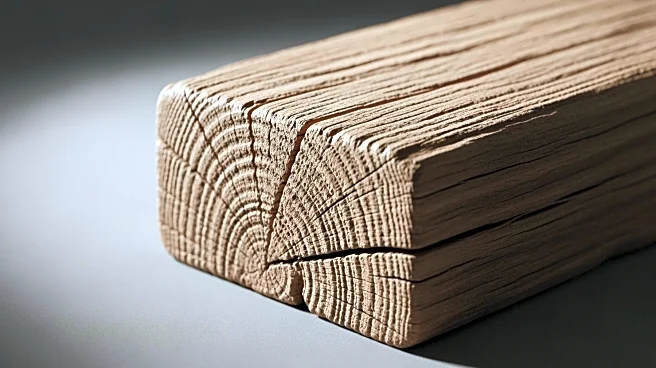What's Happening?
A study published in Nature explores the micro-damage mechanisms in archaeological wood when subjected to axial stress at the cell wall layer scale. The research highlights significant differences in chemical
composition between archaeological and modern wood, affecting their mechanical properties. Archaeological wood exhibits higher lignin content but lower cellulose and hemicellulose, leading to increased porosity and altered cell wall constituents. The study uses finite element simulations to predict micro-damage initiation sites and reveals that micro-damage consistently originates at the S 1-2 transition of the cell wall. The findings suggest that archaeological wood is more susceptible to micro-damage under lower axial stresses compared to modern wood.
Why It's Important?
Understanding the micro-damage mechanisms in archaeological wood is crucial for conservation efforts and the preservation of historical artifacts. The study provides insights into the structural integrity of ancient wood, which can inform restoration techniques and the development of protective measures. The research also contributes to the broader field of material science, offering valuable data on the behavior of wood under stress. This knowledge can be applied to modern engineering and construction practices, particularly in the use of wood as a sustainable building material.
What's Next?
Further research is needed to explore the propagation mechanisms of micro-damage in archaeological wood, potentially involving additional SEM observations. The study suggests that future experiments should include axial tensile stress scenarios to complement the current findings. Conservationists and material scientists may collaborate to develop new methods for reinforcing archaeological wood and preventing further degradation. The insights gained from this research could lead to improved preservation techniques for historical artifacts and structures.
Beyond the Headlines
The study raises questions about the long-term impact of environmental factors on the degradation of archaeological wood. It also highlights the importance of interdisciplinary collaboration in addressing complex scientific challenges. The findings could influence cultural heritage policies, emphasizing the need for advanced conservation strategies to protect historical artifacts. Additionally, the research underscores the potential for using modern technology to uncover insights into ancient materials, bridging the gap between past and present scientific knowledge.











